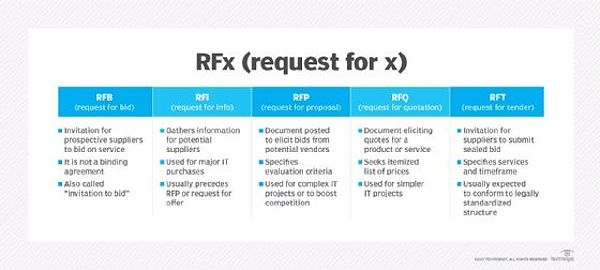As a small business owner, I know firsthand the challenges of juggling multiple tasks and responsibilities. It’s difficult to find the time and resources to manage everything effectively, especially when it comes to non-core business functions. This is where the business process outsourcing (BPO) industry comes in. By understanding the process in the BPO industry, SMEs can leverage external expertise to streamline operations, reduce costs, and free up valuable resources to focus on their core competencies.
Toc
- 1. Understanding BPO Processes: A Framework for SMEs
- 2. The Benefits of BPO for SMEs
- 3. Related articles 01:
- 4. Navigating the BPO Landscape: Choosing the Right Partner
- 5. Managing the BPO Relationship: Ensuring Success
- 6. Related articles 02:
- 7. The Future of BPO for SMEs: Emerging Trends
- 8. FAQ
- 9. Conclusion
Understanding BPO Processes: A Framework for SMEs
What is Business Process Outsourcing (BPO)?
So, what exactly is BPO? At its core, Business Process Outsourcing is about handing over specific business functions to a third-party service provider. Think of it as a strategic delegation of tasks that aren’t central to your operations—like passing the baton in a relay race. This allows you to focus on what you do best while leaving the nitty-gritty to the experts.
For small and medium-sized enterprises (SMEs), this can be a game-changer. By outsourcing functions such as customer service, accounting, or IT management, SMEs can tap into specialized skills and advanced technologies that they might not have in-house. This approach not only improves operational efficiency but also provides a significant boost in competitiveness.
Key Processes in the BPO Industry
The BPO landscape is diverse and can be broken down into two main categories: front-office and back-office functions. Let’s take a closer look at each.
Front-office Processes
Front-office processes are all about customer interaction. This includes customer service, sales, marketing, and technical support. Imagine a small e-commerce business overwhelmed with customer inquiries. By outsourcing customer service to a BPO provider, they can ensure that customers receive timely support while the business focuses on product development and marketing strategies. This shift not only enhances customer satisfaction but also allows the business to grow without the constant pressure of managing every customer interaction internally.
Back-office Processes
On the flip side, we have back-office processes. These are the behind-the-scenes functions that keep your business running smoothly but don’t directly interact with customers. This includes tasks like accounting, payroll, human resources, IT management, and data entry. By outsourcing these functions, SMEs can streamline operations and alleviate the workload on their internal teams. This means more time for strategic initiatives rather than getting bogged down in daily operational tasks.
Understanding these processes in the BPO industry is crucial for SMEs looking to maximize their outsourcing strategy.

The Benefits of BPO for SMEs
Cost Reduction and Efficiency Gains
One of the most appealing aspects of BPO for SMEs is the potential for significant cost savings. By outsourcing non-core functions, businesses can drastically reduce overhead costs, including salaries, office space, and equipment expenses. BPO providers often operate on a larger scale and have specialized expertise, allowing them to perform tasks more efficiently than an in-house team.
Research shows that SMEs that outsource back-office functions can save up to 40% compared to handling these operations internally. That’s a hefty chunk of change that can be reinvested into your business—whether it’s enhancing your product line, expanding your market reach, or ramping up marketing efforts.
Focus on Core Competencies and Business Growth
By delegating non-essential tasks to BPO providers, SMEs can redirect their energy toward core business activities. This not only fosters innovation but also encourages growth. For instance, a small accounting firm that outsources payroll processing can devote more time to providing specialized financial advisory services. This shift not only enhances their service offerings but also leads to increased revenue and improved client satisfaction.
When SMEs concentrate on their core competencies, they can carve out a unique position in the marketplace, which is vital for long-term success.
Access to Advanced Technology and Expertise
Another significant perk of BPO is the access it provides to cutting-edge technology and specialized expertise. Many BPO firms invest heavily in the latest tools and technologies to streamline their operations and deliver high-quality services. By partnering with these providers, SMEs can leverage state-of-the-art solutions without the hefty price tag of implementing them in-house.
1. https://viralblogspost.com/crm-in-real-estate-industry
2. https://viralblogspost.com/industrial-psychology-masters-programs
4. https://viralblogspost.com/classic-industries-huntington-beach
5. https://viralblogspost.com/the-timeless-allure-of-the-cartier-love-necklace
For example, a small company outsourcing its IT services might gain access to advanced cybersecurity measures, cloud computing solutions, and data analytics tools that would otherwise be too expensive to implement. This technological edge can enhance operational capabilities, improve decision-making, and ultimately lead to better business outcomes.

Identifying Your BPO Needs
The first step in your BPO journey is to identify which business processes are ripe for outsourcing. These should typically be non-core functions that are repetitive, high-volume, or require specialized skills that you may not have in-house. Think of tasks like customer support, payroll processing, or even marketing activities. By outsourcing these functions, you can free up internal resources and focus on what really matters.
When assessing which processes to outsource, consider how it will impact your overall efficiency and effectiveness. Clearly defining your objectives and expected outcomes will help you select the most suitable processes for BPO.
Evaluating BPO Providers
Choosing the right BPO provider is crucial. You’ll want to evaluate several factors, including the provider’s industry experience, technological capabilities, security measures, communication protocols, and pricing models. Conduct thorough due diligence—check references, read case studies, and ask the tough questions.
Also, consider the cultural fit between your organization and the BPO provider. A shared set of values and communication styles can lead to a more productive partnership. If you and your provider are on different pages, it can lead to misunderstandings and challenges that might derail your outsourcing efforts.
Types of BPO Models
When it comes to BPO, SMEs have several models to choose from:
- Onshore BPO: Outsourcing to a provider within your own country. This can simplify communication and cultural alignment.
- Nearshore BPO: Outsourcing to a provider in a neighboring country. This often offers similar time zones and cultural similarities.
- Offshore BPO: Outsourcing to a provider in a distant country. While this can lead to significant cost savings, it may also introduce challenges related to communication and time differences.
Each model has its pros and cons, so weigh the trade-offs carefully to determine what works best for your business.

Managing the BPO Relationship: Ensuring Success
Establishing Clear Communication Channels
Clear communication is the lifeblood of a successful BPO partnership. Regular meetings, defined escalation procedures, and the use of technology—like video conferencing and project management tools—are essential for maintaining a seamless flow of information. Regular check-ins help build trust and ensure that both parties are aligned on objectives and expectations.
Establishing a solid communication plan can help mitigate misunderstandings and ensure that issues are addressed promptly. A proactive approach can lead to a more productive and harmonious working relationship.
Monitoring Performance and Measuring Results
To ensure your BPO provider is delivering on its promises, implement a robust performance monitoring system. This might include setting key performance indicators (KPIs), establishing service-level agreements (SLAs), and regularly reviewing the provider’s performance through detailed reporting.
Regular assessments allow you to identify areas for improvement and ensure that the BPO relationship continues to meet your evolving needs. By fostering a culture of accountability and transparency, both you and your BPO provider can work towards shared goals.
Addressing Challenges and Resolving Issues
Even with careful planning, challenges can crop up during your BPO relationship. Being proactive in addressing these issues is crucial. Open communication, problem-solving strategies, and conflict resolution techniques can help maintain a positive and productive partnership.
1. https://viralblogspost.com/project-management-software-for-construction-industry
2. https://viralblogspost.com/global-industrial-distribution-inc
4. https://viralblogspost.com/industrial-psychology-masters-online
For example, if you notice a delay in service delivery from your BPO provider, addressing the issue promptly through constructive dialogue can help identify the root cause and develop a solution that works for both parties. A collaborative approach to problem-solving can strengthen your relationship with BPO providers and enhance the overall effectiveness of your outsourcing arrangement.
The Future of BPO for SMEs: Emerging Trends
The Rise of Digital BPO
The BPO industry is currently undergoing a digital transformation. The adoption of cloud computing, artificial intelligence (AI), and robotic process automation (RPA) technologies are driving increased efficiency and improved data analytics. This digital shift makes BPO an even more attractive option for SMEs.
As these technologies continue to evolve, SMEs can expect an increasing number of BPO providers to offer innovative solutions that leverage these advancements. This trend not only enhances the capabilities of BPO providers but also enables SMEs to stay competitive in a rapidly changing business landscape.
Focus on Industry-Specific Expertise
BPO providers are increasingly specializing in specific industries, offering tailored solutions and deep domain expertise to their clients. This trend aligns perfectly with the needs of SMEs, who often seek partners that understand the unique challenges and requirements of their particular sector.
By selecting BPO providers with industry-specific knowledge, SMEs can benefit from customized solutions that address their specific needs and help navigate the complexities of their markets. This focus on specialization can lead to better outcomes and a more effective outsourcing strategy.
FAQ
Q1: What are the common risks associated with BPO?
A1: Some common risks include data security, communication breakdowns, loss of control, hidden costs, and cultural differences.
Q2: How can SMEs ensure data security when outsourcing?
A2: Choose providers with robust security measures, use encryption, and sign data protection agreements to safeguard sensitive information.
Q3: What are some common BPO mistakes to avoid?
A3: Avoid not clearly defining the scope of work, failing to establish communication channels, and neglecting to monitor performance closely.
Conclusion
In summary, understanding the key processes involved in the BPO industry and choosing the right partner can unlock significant benefits for SMEs, including cost savings, improved efficiency, and faster growth. BPO can empower small and medium-sized enterprises to focus on their core competencies and compete effectively in today’s dynamic business environment. So, why wait? Reach out to a reputable BPO provider today and discover how outsourcing can help your SME achieve its business goals.







Leave a Reply